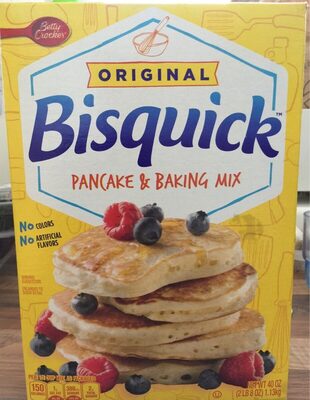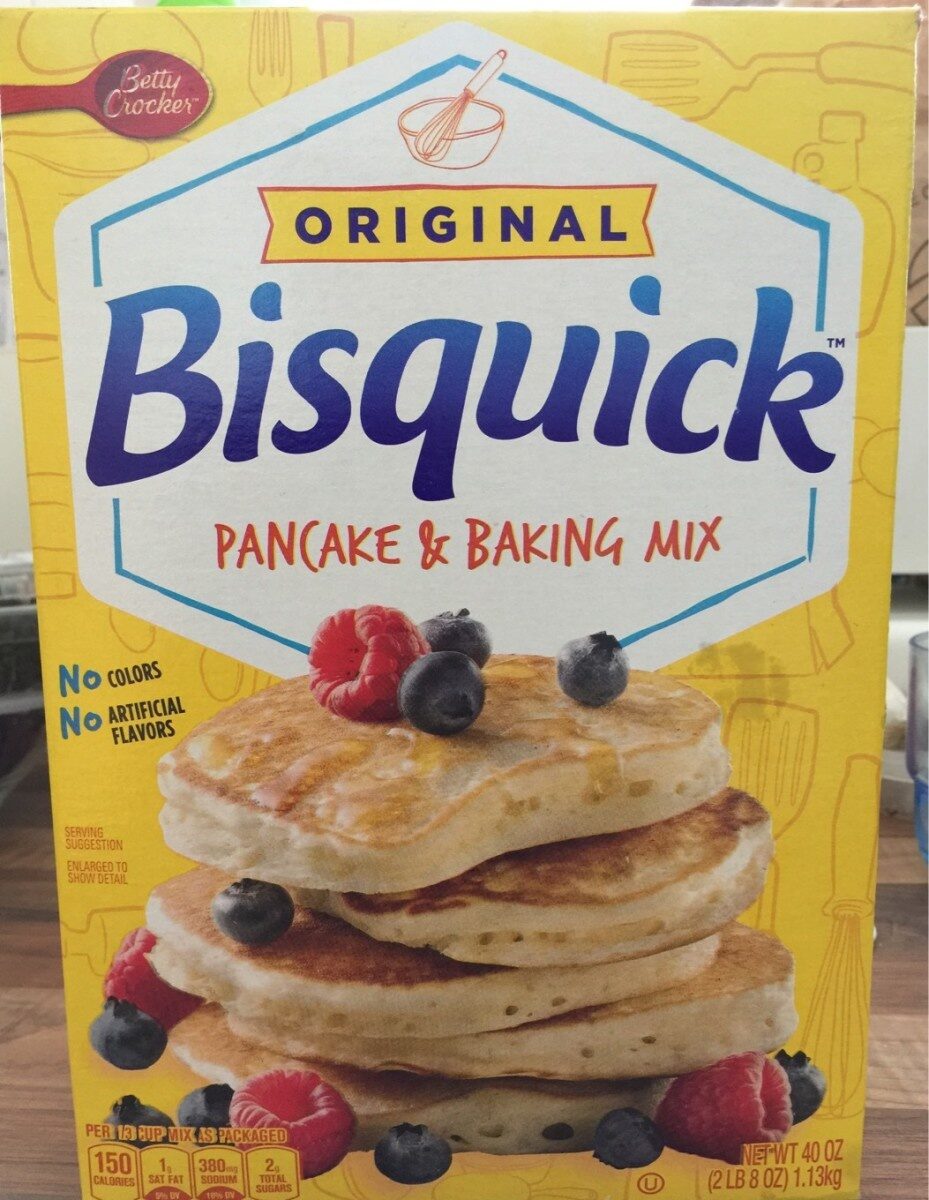Bisquick Original Pancake and Baking Mix - 1.13 kg
This product page is not complete. You can help to complete it by editing it and adding more data from the photos we have, or by taking more photos using the app for Android or iPhone/iPad. Thank you!
×
Barcode: 0016000420403 (EAN / EAN-13) 016000420403 (UPC / UPC-A)
Quantity: 1.13 kg
Packaging: Container, Card-box
Brands: Bisquick
Brand owner: GENERAL MILLS SALES INC.
Categories: Crêpes and galettes, Cooking helpers, Dessert mixes, Pancakes
Labels, certifications, awards: No colorings
Countries where sold: France, United States
Matching with your preferences
Health
Ingredients
Food processing
Additives
Ingredients analysis
Nutrition
Environment
Packaging
Transportation
Threatened species
Report a problem
Data sources
Product added on by kiliweb
Last edit of product page on by foodless.
Product page also edited by inf, openfoodfacts-contributors, org-database-usda, packbot, sophiecool62, swipe-studio, thaialagata, yuka.UTc4UEVJUWpqZmdRcHN3OC9VL3kzL2xMeHFhNVZGeVJHY2d0SVE9PQ.




